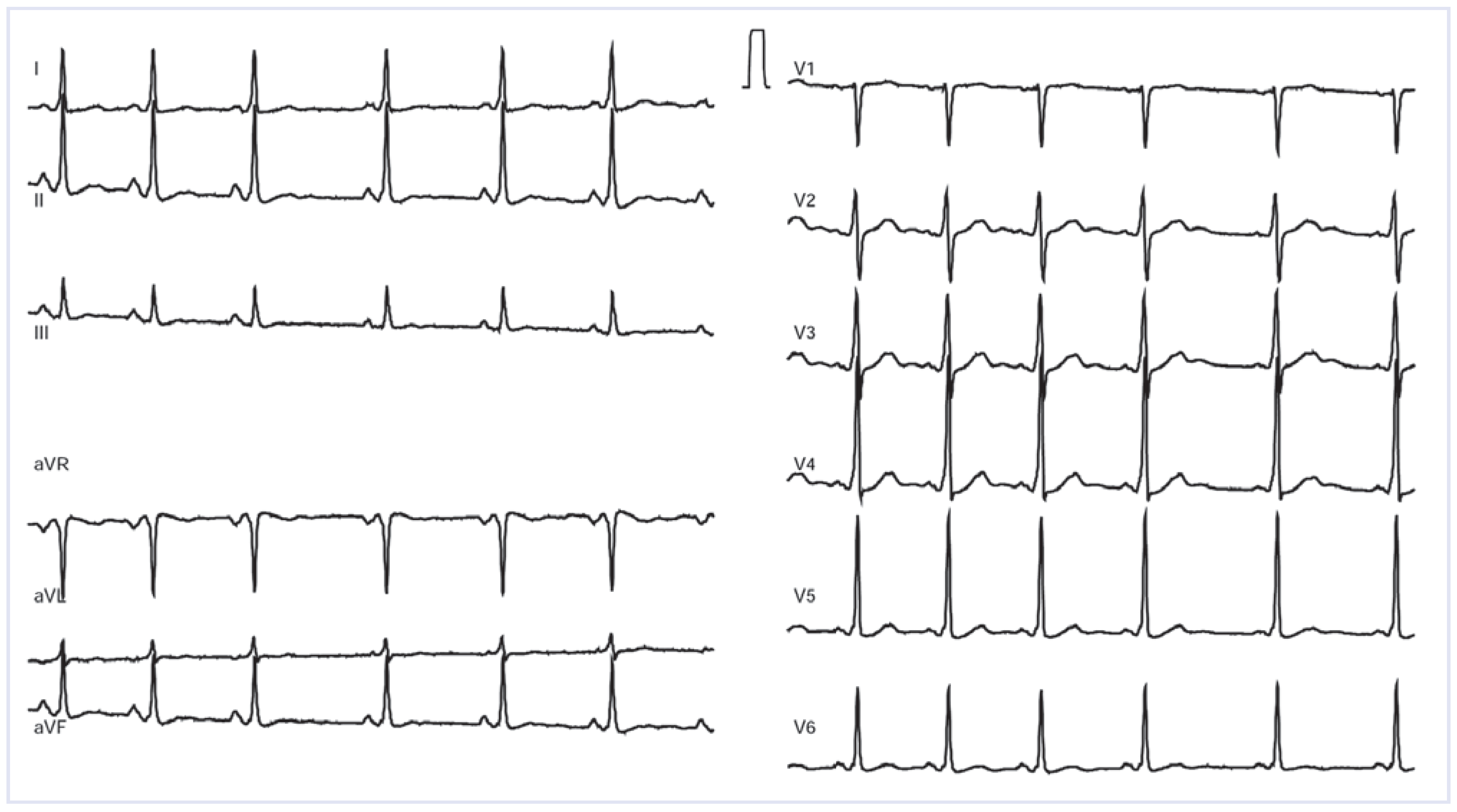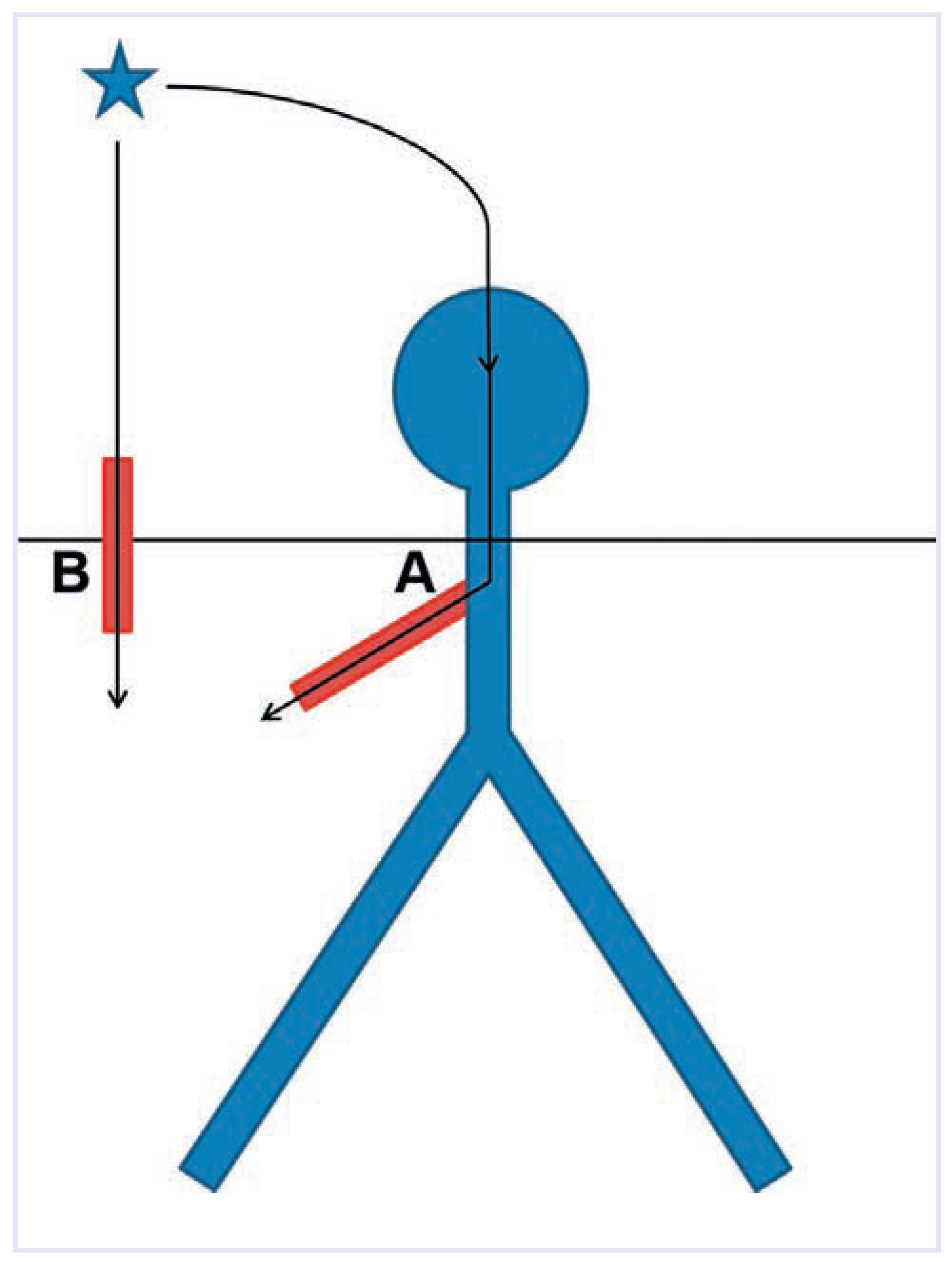Ablative Instincts in a 22-Year-Old Patient with a Delta Wave and Syncope
Case report
What type of accessory pathway is present in this patient and how should it be managed?
Funding/potential competing interests
References
- Gallagher, J.J.; Smith, W.M.; Kasell, J.H.; Benson, D.W., Jr.; Sterba, R.; Grant, A.O. Role of Mahaim fibers in cardiac arrhythmias in man. Circulation 1981, 64, 176–189. [Google Scholar] [CrossRef] [PubMed]
- Sternick, E.B.; Gerken, L.M.; Vrandecic, M.O.; Wellens, H.J. Fasciculoventricular pathways: Clinical and electrophysiologic characteristics of a variant of preexcitation. J Cardiovasc Electrophysiol. 2003, 14, 1057–1063. [Google Scholar] [CrossRef] [PubMed]
- Fisher, J.D.; Katz, D.; Lewallen, L. A lamb in wolff’s clothing. Pacing Clin Electrophysiol. 2006, 29, 1410–1412. [Google Scholar] [CrossRef] [PubMed]
- Gula, L.J.; Eckart, R.E.; Klein, G.J.; Peralta, A. Unusual QRS morphology on ECG: A rare condition and an interesting response to pacing. Pacing Clin Electrophysiol. 2005, 28, 851–854. [Google Scholar] [CrossRef] [PubMed]
- Kuhne, M.; Ammann, P.; Schaer, B.; Sticherling, C.; Osswald, S. A delta wave in a healthy swiss conscript: One does not always have to burn to learn. Pacing Clin Electrophysiol. 2010, 33, e93–e95. [Google Scholar] [CrossRef] [PubMed]
- Abbott, J.A.; Scheinman, M.M.; Morady, F.; Shen, E.N.; Miller, R.; Ruder, M.A.; Eldar, M.; Seger, J.J.; Davis, J.C.; Griffin, J.C.; et al. Coexistent Mahaim and Kent accessory connections: Diagnostic and therapeutic implications. J Am Coll Cardiol. 1987, 10, 364–372. [Google Scholar] [CrossRef] [PubMed]



© 2014 by the author. Attribution - Non-Commercial - NoDerivatives 4.0.
Share and Cite
Reichlin, T.; Pavlovic, N.; Sticherling, C.; Schär, B.; Osswald, S.; Kühne, M. Ablative Instincts in a 22-Year-Old Patient with a Delta Wave and Syncope. Cardiovasc. Med. 2014, 17, 153. https://doi.org/10.4414/cvm.2014.00235
Reichlin T, Pavlovic N, Sticherling C, Schär B, Osswald S, Kühne M. Ablative Instincts in a 22-Year-Old Patient with a Delta Wave and Syncope. Cardiovascular Medicine. 2014; 17(5):153. https://doi.org/10.4414/cvm.2014.00235
Chicago/Turabian StyleReichlin, Tobias, Nicola Pavlovic, Christian Sticherling, Beat Schär, Stefan Osswald, and Michael Kühne. 2014. "Ablative Instincts in a 22-Year-Old Patient with a Delta Wave and Syncope" Cardiovascular Medicine 17, no. 5: 153. https://doi.org/10.4414/cvm.2014.00235
APA StyleReichlin, T., Pavlovic, N., Sticherling, C., Schär, B., Osswald, S., & Kühne, M. (2014). Ablative Instincts in a 22-Year-Old Patient with a Delta Wave and Syncope. Cardiovascular Medicine, 17(5), 153. https://doi.org/10.4414/cvm.2014.00235



